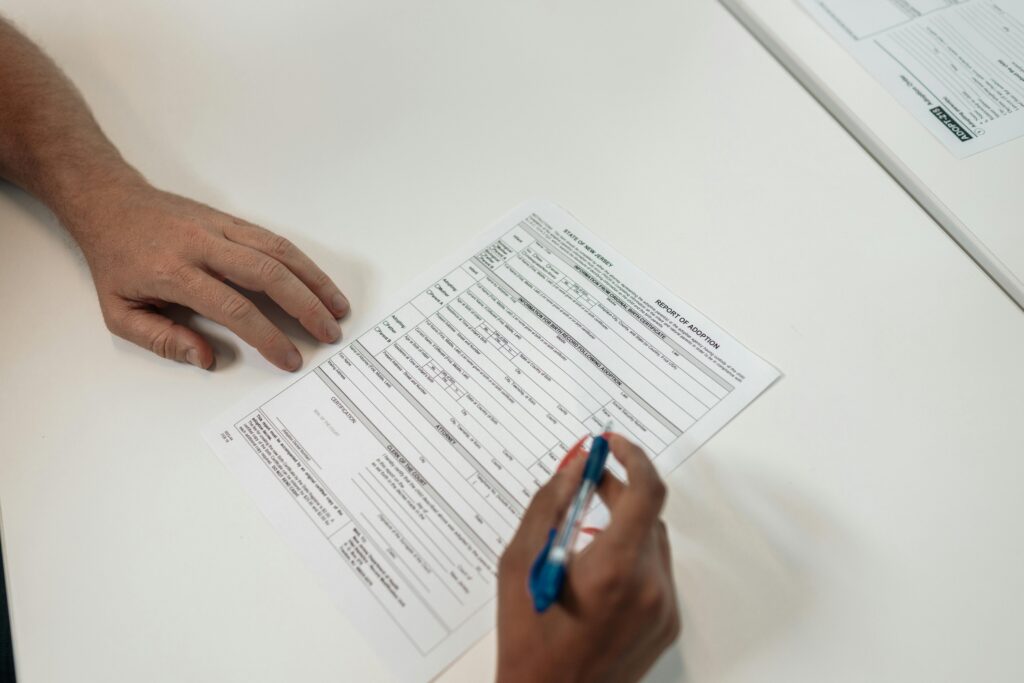marriage-based immigration laws for 2025. Learn step-by-step solutions, real-world examples, and expert tips. Start your journey today!
Are you planning to marry your foreign partner and bring them to live with you in a Tier-1 country like the US, UK, Canada, or Australia? Navigating marriage-based immigration laws can be daunting, but understanding the updated regulations for 2025 can make the process smoother. This comprehensive guide will walk you through everything you need to know about marriage-based immigration, providing actionable insights, real-world examples, and expert tips to ensure a successful application. Let’s dive in and demystify the process for you.

Table of Contents
- Understanding Marriage-Based Immigration
- Eligibility Requirements
- Step-by-Step Application Process
- Common Challenges and Solutions
- Real-World Case Studies
- Expert Tips for a Successful Application
- Conclusion
- FAQs
Understanding Marriage-Based Immigration
Marriage-based immigration allows foreign nationals to obtain residency or citizenship in a new country through their marriage to a citizen or permanent resident. This pathway is popular because it offers a relatively straightforward route to legal status, provided all requirements are met. As of 2025, each Tier-1 country has updated its laws to streamline the process while ensuring national security and integrity.
<a name=”eligibility-requirements”></a>
Eligibility Requirements
Before starting the application, it’s crucial to ensure that both you and your spouse meet the eligibility requirements. Here’s a breakdown for each Tier-1 country.
<a name=”us-requirements”></a>
US Requirements
- U.S. Citizen or Permanent Resident: The sponsoring spouse must be a U.S. citizen or a permanent resident.
- Valid Marriage: The marriage must be legally valid where it was performed and not entered into for immigration purposes.
- Age: Both spouses must be at least 18 years old.
- Residency: The U.S. citizen spouse must intend to reside in the United States.
<a name=”uk-requirements”></a>
UK Requirements
- UK Citizen or Settled Status: The sponsoring spouse must be a UK citizen or have settled status.
- Minimum Income: The sponsoring spouse must meet the minimum income requirement, currently set at £18,600 per year.
- Accommodation: Adequate accommodation for you and your dependents without recourse to public funds.
- English Language: Proof of knowledge of English, Welsh, or Scottish Gaelic at CEFR level B1.
<a name=”canada-requirements”></a>
Canada Requirements
- Canadian Citizen or Permanent Resident: The sponsoring spouse must be a Canadian citizen or permanent resident.
- Minimum Income: The sponsor must meet the minimum necessary income requirements, which vary by family size.
- No Public Assistance: The sponsor must not be receiving public assistance for reasons other than a disability.
- Undertake: The sponsor must sign an undertaking to provide financial support for three years if sponsoring a spouse.
<a name=”australia-requirements”></a>
Australia Requirements
- Australian Citizen, Permanent Resident, or Eligible New Zealand Citizen: The sponsoring spouse must meet one of these criteria.
- Genuine Relationship: Evidence of a genuine, continuing relationship.
- Character Requirements: Both spouses must meet character requirements, including passing security, health, and character checks.
- Age: Both spouses must be at least 18 years old.
Step-by-Step Application Process
The application process varies by country, but generally involves similar steps. Here’s a detailed look at each Tier-1 country.

US Application Process
- File Form I-130: The U.S. citizen spouse files Form I-130, Petition for Alien Relative.
- Wait for Approval: USCIS reviews and approves the petition.
- National Visa Center (NVC) Processing: The NVC assigns a case number and instructs on further steps.
- Submit DS-260: The foreign spouse completes the DS-260 form, Immigrant Visa Electronic Application.
- Attend Interview: Schedule and attend an interview at a U.S. embassy or consulate.
- Receive Visa: If approved, the foreign spouse receives an immigrant visa and can enter the U.S.
<a name=”uk-application-process”></a>
UK Application Process
- Submit Application: The sponsoring spouse submits an online application.
- Provide Documents: Submit required documents, including proof of relationship, financial evidence, and English language proficiency.
- Biometric Appointment: Attend a biometric appointment to provide fingerprints and a photo.
- Decision: Wait for the Home Office to make a decision, usually within 8 weeks.
- Receive Visa: If approved, the foreign spouse receives a Spouse Visa and can enter the UK.
<a name=”canada-application-process”></a>
Canada Application Process
- Submit Sponsorship Application: The Canadian spouse submits a sponsorship application (IMM 1344).
- Submit Permanent Residence Application: The foreign spouse submits a permanent residence application (IMM 0008).
- Provide Documents: Submit required documents, including proof of relationship, financial evidence, and police certificates.
- Biometric Appointment: Attend a biometric appointment.
- Interview (if required): Some applicants may need to attend an interview.
- Receive Approval: If approved, the foreign spouse receives permanent residence and can enter Canada.
<a name=”australia-application-process”></a>
Australia Application Process
- Submit Application: The sponsoring spouse submits an online application.
- Provide Documents: Submit required documents, including proof of relationship, financial evidence, and character checks.
- Health Examination: Both spouses must undergo a health examination.
- Decision: Wait for the Department of Home Affairs to make a decision.
- Receive Visa: If approved, the foreign spouse receives a Partner Visa and can enter Australia.
<a name=”common-challenges-and-solutions”></a>
Common Challenges and Solutions
Navigating marriage-based immigration can present several challenges. Here are some common issues and their solutions:
- Document Verification: Issue: Delays due to incomplete or incorrect documents.
Solution: Double-check all documents for accuracy and completeness before submission. Consider hiring an immigration lawyer for assistance. - Financial Requirements: Issue: Not meeting the minimum income requirements.
Solution: Ensure you have sufficient income or assets to meet the requirements. Provide detailed financial statements and tax returns. - Language Proficiency: Issue: Not meeting language requirements (e.g., UK).
Solution: Take an approved language test and provide the certificate with your application. Consider language courses if needed. - Genuine Relationship: Issue: Proving the genuineness of the relationship.
Solution: Provide extensive evidence of your relationship, including photos, joint bank accounts, lease agreements, and affidavits from friends and family. - Character and Security Checks: Issue: Failing character or security checks.
Solution: Ensure both spouses have clean criminal records. Provide police certificates and any necessary explanations for past issues.
<a name=”real-world-case-studies”></a>
Real-World Case Studies
Case Study 1: US Marriage-Based Immigration
Couple: John (US Citizen) and Maria (Mexican National)
Challenge: Maria’s previous visa overstay.
Solution: John filed Form I-130 and Form I-601, Application for Waiver of Grounds of Inadmissibility. With legal assistance, they provided a strong waiver request, emphasising their genuine relationship and Maria’s ties to the US. Maria’s waiver was approved, and she received her green card.
Case Study 2: UK Marriage-Based Immigration
Couple: Emma (UK Citizen) and Raj (Indian National)
Challenge: Meeting the minimum income requirement.
Solution: Emma provided her tax returns and bank statements to prove her income. They also saved additional funds to demonstrate financial stability. Raj passed his IELTS exam to meet the English language requirement. Their application was approved, and Raj received his Spouse Visa.
Case Study 3: Canada Marriage-Based Immigration
Couple: Lisa (Canadian Permanent Resident) and Ahmed (Egyptian National)
Challenge: Ahmed’s criminal record for a minor offence.
Solution: Lisa filed the sponsorship application and provided a rehabilitation letter for Ahmed’s criminal record. They included character references and evidence of Ahmed’s rehabilitation. Ahmed’s application was approved, and he received permanent residence.
Case Study 4: Australia Marriage-Based Immigration
Couple: Sarah (Australian Citizen) and Kenji (Japanese National)
Challenge: Proving a genuine relationship.
Solution: Sarah and Kenji provided extensive evidence, including photos, social media interactions, joint bank accounts, and affidavits from friends and family. They also attended couples counselling sessions and provided certificates. Their application was approved, and Kenji received his Partner Visa.
<a name=”expert-tips-for-a-successful-application”></a>
Expert Tips for a Successful Application
- Start Early: Begin the process well in advance to allow time for gathering documents and addressing any issues.
- Organise Documents: Keep all documents organised and easily accessible. Use folders or digital tools to manage paperwork.
- Seek Legal Advice: Consider hiring an immigration lawyer to navigate complex requirements and increase your chances of success.
- Communicate Clearly: Ensure all forms are filled out accurately and completely. Clear communication can prevent delays.
- Stay Informed: Keep up-to-date with any changes in immigration laws and requirements. Regularly check government websites and official announcements.
<a name=”conclusion”></a>
Conclusion
Marriage-based immigration can be a complex but rewarding process. By understanding the eligibility requirements, following the step-by-step application process, and addressing common challenges, you can increase your chances of a successful outcome. Remember to start early, organise your documents, and seek legal advice if needed.
CTA: What’s your biggest challenge with marriage-based immigration? Comment below and let’s discuss how to overcome it together!
Visual Suggestion
Use an infographic here to summarise the step-by-step application process for each country.
<a name=”faqs”></a>
FAQs
- How long does the marriage-based immigration process take?
The process can take anywhere from 6 months to 2 years, depending on the country and individual circumstances. - Can I work while my application is being processed?
In some countries, such as the US and Canada, you may be eligible for a work permit while your application is being processed. Check the specific regulations for your country. - What if my application is denied?
If your application is denied, you may have the option to appeal the decision or reapply. It’s essential to understand the reasons for the denial and address them in your next application. - Do I need to provide proof of financial stability?
Yes, most countries require proof of financial stability to ensure you can support your spouse without relying on public funds. - Can I apply for citizenship after getting a marriage-based visa?
Yes, after meeting the residency requirements, you can apply for citizenship. The process and requirements vary by country.

